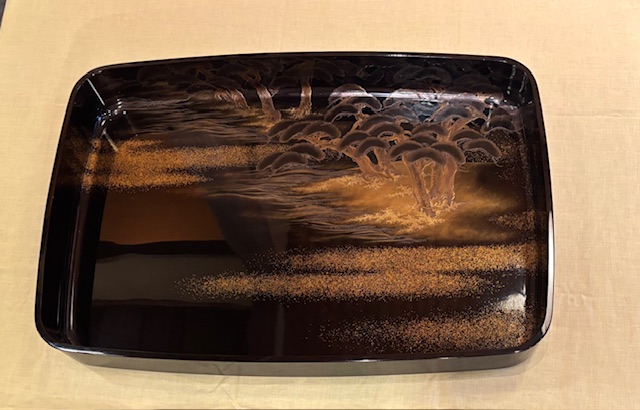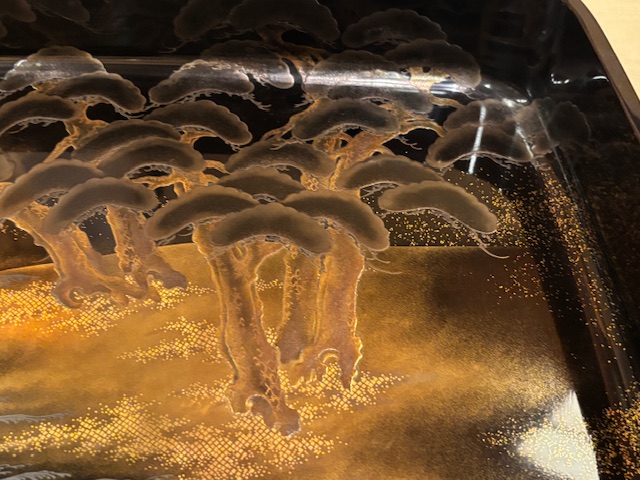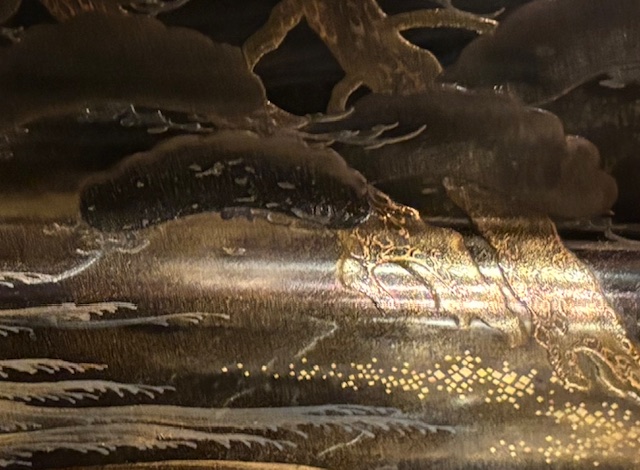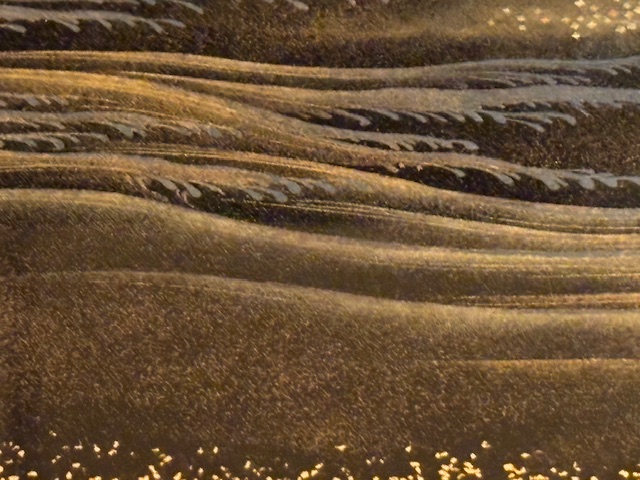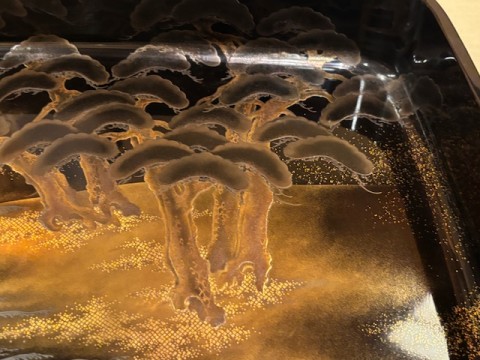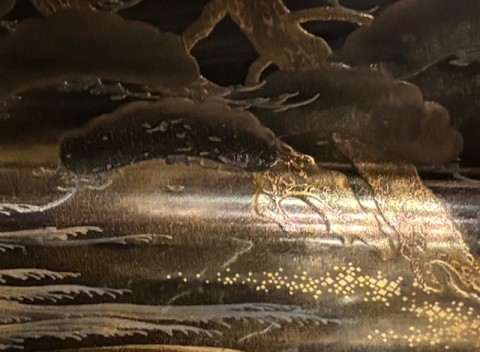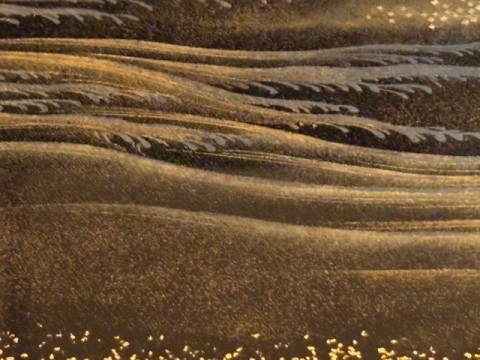Antiques
蒔絵広蓋 松原に白波図Makie Hirobuta: Pine Grove and White Waves
| No | 2402-16 |
|---|---|
| Date | Meiji Period 1860's |
| Size | 46 cm x 66 cm x 8 cm |
古代・中世の人々は、物を唐櫨(からびつ)という入れ物に入れて運んでいました。人に物を贈る場合もこの唐櫃で届けていました。
贈り物を相手に渡すときは、唐櫃の蓋を返して、この上に乗せて差し出していました。また引出物を戴くときも、唐櫃の蓋にのせて戴き、唐櫃に入れて持ち帰っていました。次第に蓋の部分の用途が広まるにつれ、唐櫃の蓋には表だけてなく裏にも蒔絵や螺錮で装飾が施されるようになり、鎌倉時代になると、蓋が独立して 「広蓋」と呼ぽれるようになりました。室町時代には、広蓋の取り扱いに関する作法も整えられ、江戸時代になると広蕃の使用は益々盛んになり、その装飾も一段と華やかになり広蓋自体が進物品となりました。 贈り物には「広蓋」を使用しさらに「掛袱紗」を掛けるという形が定着しました。
In ancient and medieval times, people carried things in containers called karabitsu. Gifts were also delivered in karabitsu.
When giving a gift to someone, the lid of the karabitsu was turned over and the gift was presented on top of the lid. Also, when receiving gifts, the gift was placed on the lid of the karabitsu and taken home in the karabitsu. As the uses of the lid gradually spread, the lid of the karabitsu came to be decorated with lacquer and mother-of-pearl on both the front and back, and in the Kamakura period, the lid became independent and came to be called "hirofuta". During the Muromachi period, the manners for handling hirobuta were established, and in the Edo period, the use of hirofuuta became more and more popular, its decoration became even more gorgeous, and the hirofuta itself became a gift item. The practice of using a "hirofuta" for gifts and then draping it with a "kakefukusa" became established.
The "hirofuta" was the ultimate form of hospitality.
Contact us





